Family Survey
Family Survey Please share your honest feedback to help us improve the care and safety of your loved one.
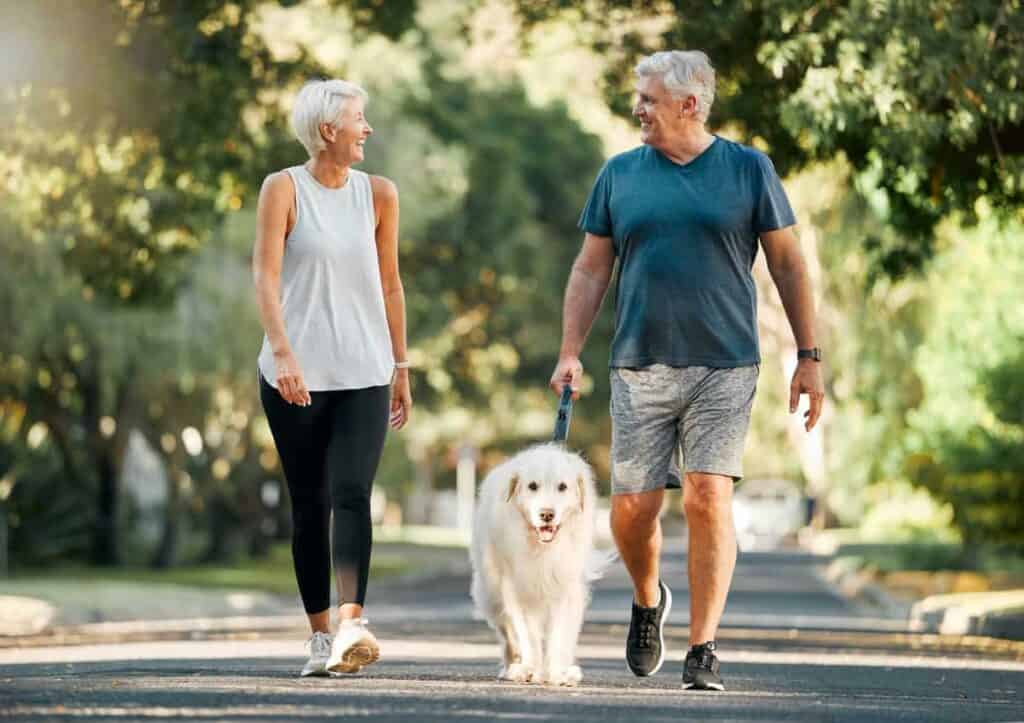
As we age, regular exercise is essential to our overall well-being. Working out can pose a challenge for a senior who hasn’t exercised in a long time or isn’t an integral part of their daily schedule.
At the beginning of the workout schedule, it may be challenging and sometimes painful. Still, as a senior’s muscles get used to exercising, they will enjoy the activities. A regular workout will help seniors by strengthening their muscles, enabling them to do their daily activities without relying solely on their family and friends.
You must be patient when helping your aging loved one start a regular exercise routine as they will benefit immensely from exercising.
If your loved one is finding it challenging to exercise, what you can do is help them focus on their exercise goals and help them overcome any barriers. Keep reading to learn more about easy exercises your loved one can do at home.
Watching your once-strong loved one struggle can be challenging, and sometimes we are tempted to act as though everything is alright. Denial can harm you and the person you are caring for. However, you can help your loved one start exercising by joining in their activities and letting them know that little effort will make a difference in the long run.
Simple activities like unassisted getting up or into the shower can pose a challenge, especially if a senior has mobility issues.
When you incorporate some balancing exercises at home, you will help them utilize their muscles. With time and effort, they may start enjoying moving about independently.
Some of the benefits a senior will reap when they exercise at home include:
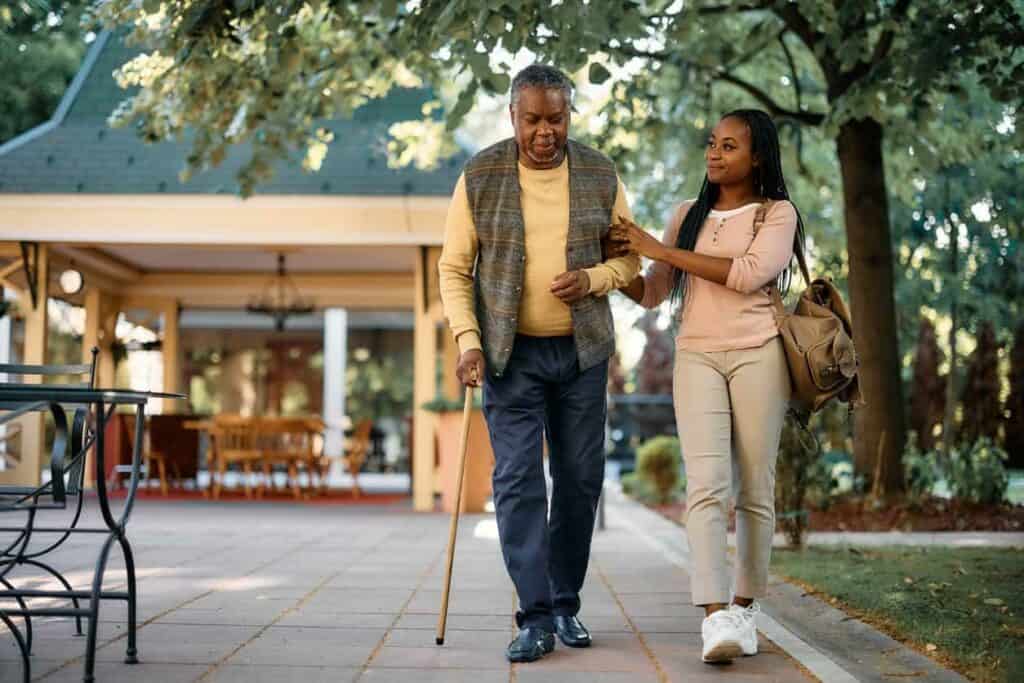
When you encourage your loved one to start home workouts for seniors, they will not have to follow a fixed schedule to start their exercises.
Your loved one doesn’t have to keep up with other people or be uncomfortable as they exercise. If your loved one feels uncomfortable, they can pause, relax, and resume after resting.
When a senior rushes to finish their exercise, they may end up hurt, but this isn’t the case when they exercise at home as they have all the time.
When your loved one starts exercises for older adults at home, they can get into their workout without worrying about other people’s thoughts and reactions. With the senior exercise at home program, your loved one doesn’t have to worry about their fitness level or feel self-conscious about their body.
Exercising at home ensures your loved one enjoys their privacy without fear of making a mess or a fool of themselves.
When your loved one starts strengthening exercises for older adults at home, you can help them exercise with the available resources. They can only buy new equipment if they can afford it or want to. It will also save them money they could use on a local gym subscription.
With exercise for older adults at home, a senior can exercise anytime, and won’t have to worry about stepping out of the home to workout.
Additionally, the type of exercise might depend on their mood making it more fun. For instance, if they are excited, they may dance; if they are tired, yoga will significantly help.
As the primary caregiver for your loved one, there are ways in which you can help your loved one with their exercises. The following tips will help you develop and stick to a home exercise routine.
When you set a workout schedule, ensure it is brief, as this will give you an incline on what’s working for your loved one and what isn’t. During the brief sessions (10-15 minutes), note where your loved one is struggling and look for ways to help them achieve their workout goals.
Try as much as possible to make exercising an integral part of a senior’s schedule, where you set aside a certain amount of time for exercising daily.
The senior’s clothes may hinder them from exercising, significantly if they restrict movements. Wearing comfortable clothes and shoes is one way of encouraging your loved one to enjoy their home workout.
When your loved one starts exercising, you should note any changes and use them to encourage them to keep exercising.
For example, if they are participating in standing balance exercises, let them know when they make any progress. Some of these small changes will go a long way in encouraging your loved one to press on even when they feel like giving up.
When you know your loved ones’ limitations, you will be in a better position to assist them with their exercises. You will know the type of exercises to encourage them to participate in and develop an enjoyable workout routine that you can also join.
If you’re constrained by time or distance, you can find a caregiver from Amy’s Eden to assist your loved one to exercise at home and provide some level of personal assistance.
Your loved one can do various exercises at home without the need to join a local gym or have a fitness trainer. Some of these elderly exercises at home include the following:
As a person ages, their body undergoes several changes, making it challenging to maintain mobility. However, a senior can stay active through proper home workouts and retain their body’s mobility.
When your loved one exercises regularly and leads an active lifestyle, they are, in essence, helping their muscles remain strong even in their twilight years.
Additionally, stretching exercises help delay the early onset of diseases like arthritis, mental illness, and diabetes.
Studies show that ligaments and connective tissues between bones become less elastic with age, reducing seniors’ mobility. However, when your loved one incorporates stretching exercises into their daily routine, they will help strengthen the ligaments and connective tissues, which will help ease a lot of joint pain.
When assisting your loved one with stretching exercises, you must find the best activity for them that is ideal for their fitness level. Your loved one can stretch as a standalone exercise or stretch before or after their daily exercises.
Ensure your loved one always walks around for a few minutes before their stretching workout, as this will help loosen their muscles.
Remember to remind your loved one to observe their breathing closely throughout the workout. Sometimes they may not notice they are holding their breath; ask them to try to exhale and relax as they work out.
Some stretching exercises that you can encourage your loved ones to do at home include:
Standing quadriceps stretching exercises are vital as they help with flexibility, which is crucial to a senior’s mobility. This exercise focuses more on the quadriceps muscles at the top of a person’s upper legs.
If your loved one has mobility issues and standing is a problem, they can try sitting quadriceps exercises. Here they will:
This stretching exercise will positively impact seniors’ mobility as it aims to improve their flexibility.
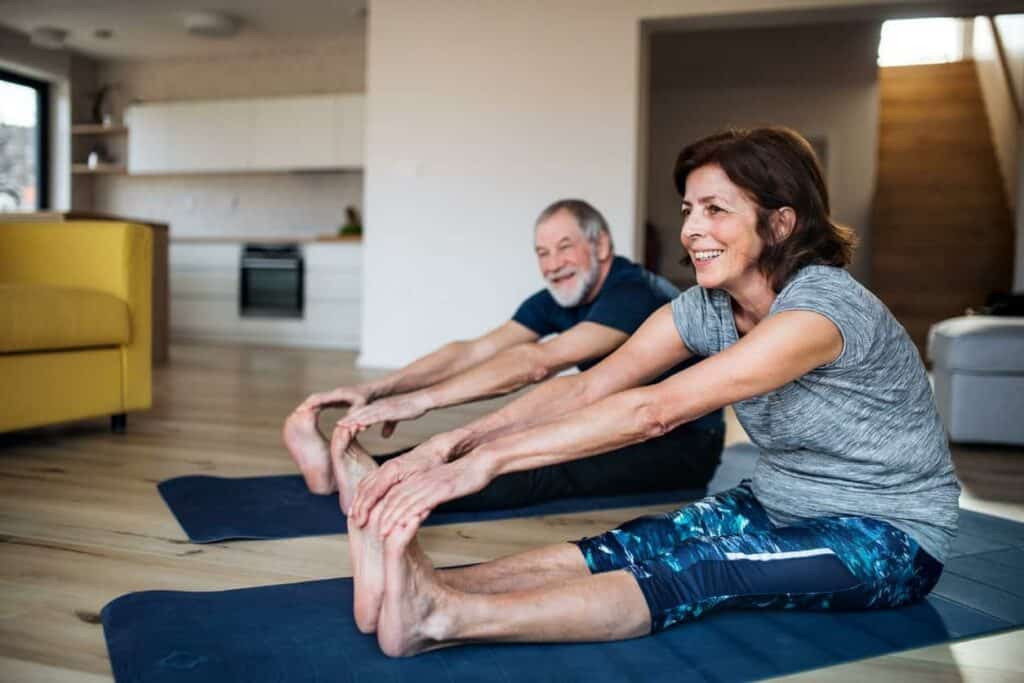
This type of exercise aims to improve a senior’s lower back flexibility. After this workout, your loved one should experience decreased stiffness in their lower back and legs.
To start this exercise, ensure your loved one:
This type of exercise focuses on the upper body, especially the shoulders. It will help a senior loosen their shoulder joints, which will aid in alleviating shoulder pain.
For this exercise, a senior will have to:
Once your loved one completes their stretching exercises, always remain hydrated and eat a well-balanced diet.
Regular exercise is not only beneficial to a senior physically, but their heart health will also benefit immensely. With a healthy heart, your loved one will have a longer lifespan, and their body will benefit as the heart will supply necessary oxygen to all body organs.
As we age, our heart health also changes, which means that a senior’s heart health needs special care. When developing a workout routine for your loved one, look for exercises that will help strengthen their hearts.
The American Heart Association recommends that your loved one have at least 150 minutes of weekly cardio exercises.
Regular cardiovascular exercise is essential for all people, irrespective of their age. These exercises promote a critical blood and oxygen supply to the muscles and other organs.
Some of the benefits of regular cardiovascular exercise are:
The best part of cardiovascular exercise is that it doesn’t require much from a senior, apart from determination and focus.
Some of these exercises include the following:
Walking as an exercise is one of the most accessible forms of workout which most seniors prefer. The best part is that you can modify this workout to match your loved one’s pace and then take it to a comfortable level.

Seniors can incorporate walking into their workout schedule even when they have mobility and balance issues, as they can use a walker or cane during their walk.
For this type of exercise, all your loved one has to do is move their body continuously. Depending on your loved one’s preference, you can include Zumba, tango, or line dancing into their workout schedule.
With dancing, your loved one will enjoy the following benefits:
For this activity, a senior can use a stationary or outdoor bicycle. Cycling will help older people with their hamstring and quadriceps muscles. When your loved one uses cycling for cardiovascular exercises, their body will enjoy increased blood flow.
Additionally, cycling will put a load on their lungs and hearts. When repeated, the body adapts by increasing its capacity, which benefits the heart.

For seniors, mental activities aim to improve their cognitive abilities. When considering mental exercises, look for those that will challenge your loved one’s memory and gear toward problem-solving skills.
Some of these exercises include:
When you include mental exercises into an older person’s workout schedule, they will enjoy the following benefits:
Setting exercise goals is easy and great, but achieving them can be challenging. Therefore, you need to be realistic and set achievable goals with assistance from your loved one. Take into consideration their likes and interests.
One way of setting achievable goals is by starting slowly and then picking up momentum with time.
Creating a schedule for your loved one can be one of the best things you can do to help them have control over some aspects of their lives. Regular workout schedules help older adults keep fit, improve their health, and improve their mood and sleep patterns.
You can create a home elderly exercise schedule by following these steps:
Several challenges may arise when it comes to exercising at home. Sometimes, your loved one may pose the most significant challenge, especially if they are not keen on exercising.
Some of the challenges that you will face include:
The first thing in helping your loved one overcome any potential challenges they might face while following a routine workout schedule is to identify these challenges, then, develop a way of overcoming these challenges.
You can help your loved one in the following ways.
Always plan and let your loved ones know beforehand about their exercise; make exercising an integral part of their daily routine and write it down somewhere they will see it.
If you notice they are not interested in working out, you can ask them to invite a friend to exercise together as this may boost their morale.
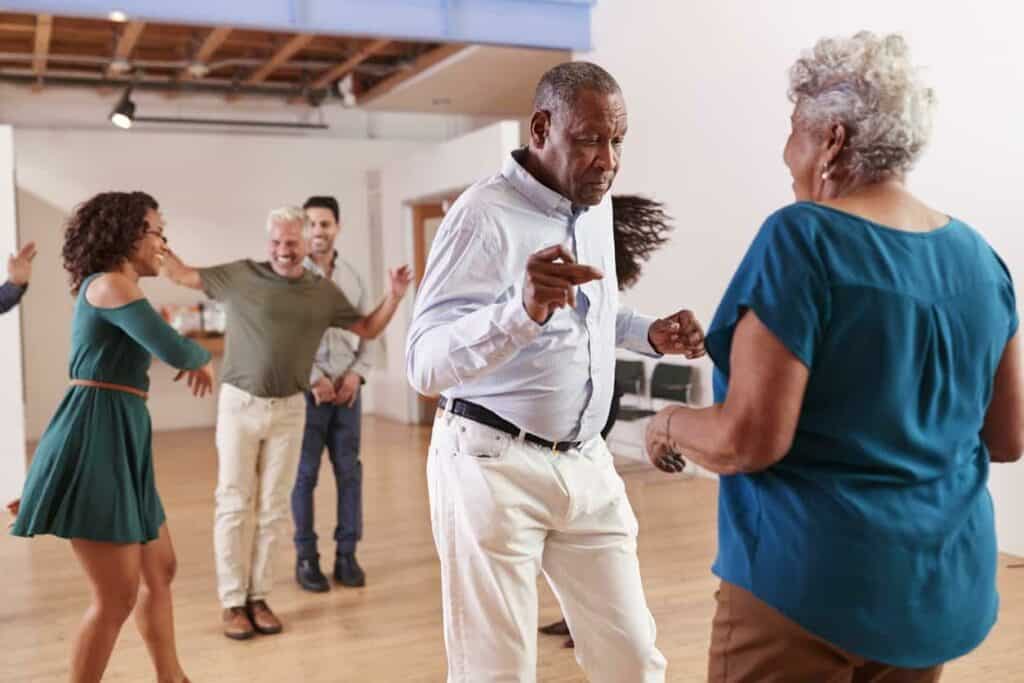
Make exercise a fun time where your loved one will not view it as an inconvenience but rather be something they look forward to during their busy schedules.
If this is your loved ones’ challenge, review their daily schedule, identify available time slots, and use them for home exercises. All you need is a 30-minute window in a senior’s schedule. For example, you can encourage your loved ones to ride their bike or walk with you to the park.
It would help to identify the hobbies and interests of your beloved senior before developing an exercise plan. Doing this will ensure the activities you choose will be enjoyable. You can also join them in their workout, as this will minimize boredom.
Before exercising, it is essential to warm up and loosen up, and after a workout, ensure your loved one cools down to avoid injuries. Teach your loved one to exercise safely, considering their age, fitness level, and health conditions.
When you use a positive tone, your loved one will feel encouraged to keep pressing on, even when they feel like giving up. Studies show that a positive approach works better than criticism.
For example, instead of criticizing your loved one for not exercising, try to encourage them and point out the benefits of regular exercising.
When you spend time together with your loved one, you will notice when they have a free moment which you can use for exercising. For example, if your loved ones love doing crossword puzzles, you can suggest they do one as they wait for their dinner.
When your loved one starts exercising, have an exercise journal where you write down their workout goals, schedule, and achievements. Then keep this journal where your loved one can easily access it.
Let your loved one know you believe in them, and also post motivational notes around their home or the place they love to relax as a friendly reminder of their ability to achieve their goals.
Without encouragement, your loved one may give up quickly, especially if they don’t achieve the level of fitness they expect within a specific time.
Each time your loved one feels like giving up, be there and encourage them, show them it’s doable; all they have to do is put in more effort and have faith in their ability to make it.
Growing older will put a lot of strain on a person’s body, making it less responsive, and this can make it challenging to complete some basic activities. Create a schedule that starts slow and then builds up as they gain stamina and are used to the exercises.
You can also start with brief exercise periods until your loved one can withstand more extended periods.
Be on the frontline in supporting your loved ones in their decision to stay healthy and active. If your loved one decides to be active and have fun activities, encourage them and join in!
Your encouragement will help them lead an active lifestyle and have a better quality of life.
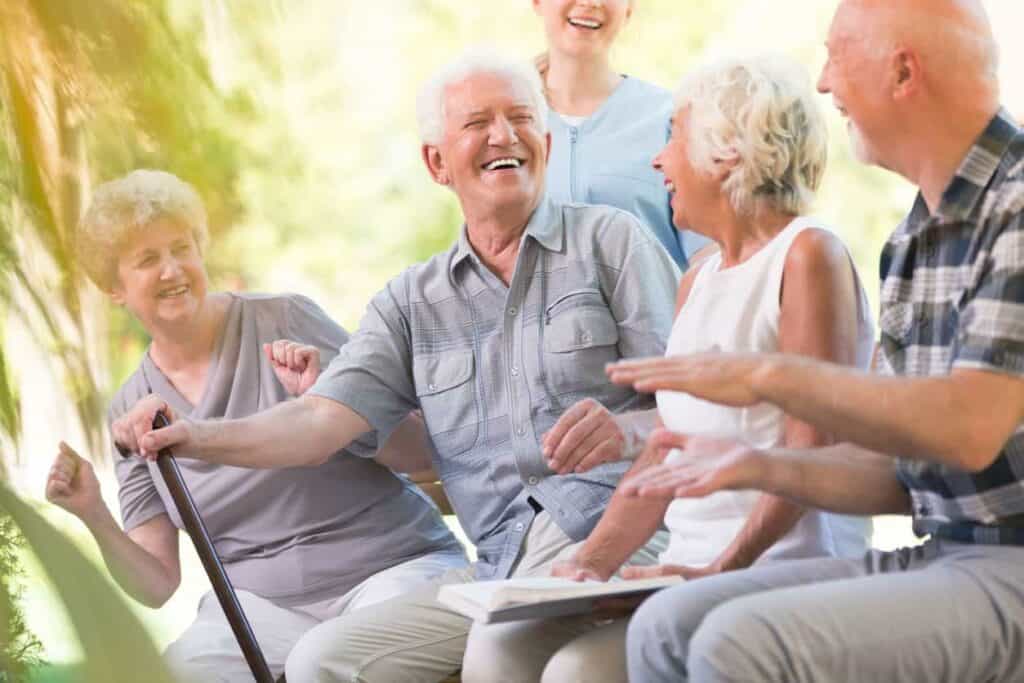
Making regular workouts an integral part of a seniors’ life is essential to their health.
You can encourage your beloved senior to remain physically fit at home by engaging in some of the stretching, cardio, and mental exercises we have discussed above. Make exercise fun by exercising with them, choosing fun activities that fit into their schedule, or having their friends involved. As your loved one exercises at home, ensure they have ample time to rest, sleep and recharge as well.
If you need a caregiver to assist your loved one exercise at home, do not hesitate to contact us at Amy’s Eden. Our caregivers are trained to ensure your loved one carries out their exercises safely. They can also provide personal and home care assistance if required. We can’t wait to assist your loved one lead an active and healthy lifestyle.
Unlock the secrets to promoting health, strength, and independence for your aging loved one. Empower them with personalized at-home exercises. Start today for a vibrant, active aging journey!
Get care >
Family Survey Please share your honest feedback to help us improve the care and safety of your loved one.
Professional Senior In-Home Care in Carson City Keep your loved one in the comfort of their cherished home. Amy’s Eden delivers exceptional senior care services
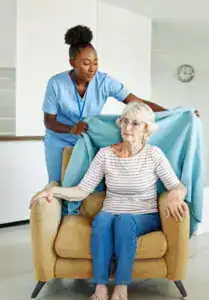
The Best Home Care in Reno, NV The comfort of your home, the quality of Eden. We provide compassionate, professional in-home care services for seniors
A Real Home for Assisted Living in Carson City, NV Give your loved one the exceptional, personalized care they deserve. Our senior care homes in
